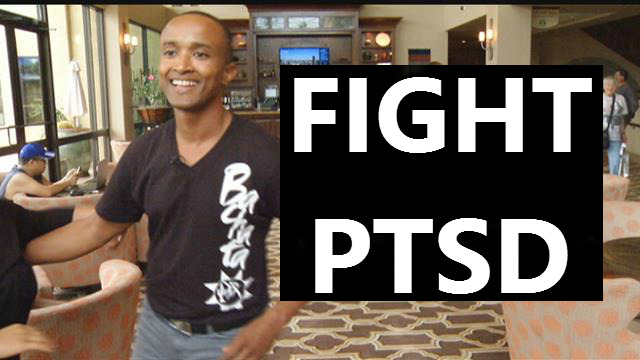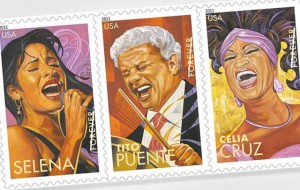This week, I came across an article online about a Tucson army veteran named Antonio Medina. In the video accompanying the article, Medina is a cheerful, fit-looking guy with a gigantic smile on his face. He’s got some pretty awesome salsa moves, and he’s a military man.
Last weekend, Medina hosted the Tucson Salsa Bachata Dance Festival at the Hilton Conquistador. His goal? To introduce returning military service members to salsa dancing.
After serving the second of his four tours of duty in Afghanistan, Medina began to experience symptoms of PTSD. He used salsa dancing as a way to cope with his PTSD because, he says, (with a gigantic, adorable smile), there’s some just something about the music that made him feel happier and less anxious.
It makes perfect sense to me that salsa dancing would be an excellent remedy for depression, anxiety, or even PTSD. As a lover of many kinds of dance, I can relate to that feeling of connectivity you can tap into when you’re listening to lively and emotional music, moving your body in tandem, engaging your mind through technique, and connecting with your dance partner.
But as I put more research into this concept — the curative powers of dance, if you will — I realized that these impacts have actually been substantiated through various psychological studies.
In a 2007 study for the University of Heidelberg in Germany, Dr. Sabine Koch looked into the effects of a single dance intervention on patients who were being treated for depression. She compared the results to patients who experienced either an intervention with just exercise (reaching the same heart rate as those who danced) or with just music (using the same music as with the dance intervention).
Koch’s study found that the patients who underwent the dance intervention — a combination of movement and music, as opposed to movement and music separately — garnered the greatest benefit.
At the time of this study, Dance/Movement Therapy (DMT) and Drama Therapy (DT) — avenues of what us lay-people might describe as “Art-based” or “Arts Therapy” — were not widely researched, as Koch points out. She blames this lack of evidence of their effectiveness not on a lack of efficacy, but on a lack of funding.
Eight years later, however, we are starting to see much more research coming out in favor of arts-based therapy as an alternative to prescription drugs for treating mental health concerns such as depression, anxiety, and PTSD. The American Dance Music Association, which serves as a US-based resource for DMT-related research, awareness, and regulation, describes the practice as being based on the “empirically supported premise that the body, mind and spirit are interconnected.” A relatively new form of therapy, DMT itself has been pioneered in an official sense largely during the last 50 years, and is now practiced widely across the world.
The problem our country faces regarding soldiers who return from war zones with symptoms of PTSD has proved disturbingly pervasive. Not many of us have to face the likelihood of mental illness as an occupational hazard, and the challenge of creating awareness is especially difficult in the military culture, where maintaining composure through tough circumstances is a hard-won, necessary skill.
Although clear statistics regarding the extent of the impact of PTSD among military members are elusive, veterans from the Iraq and Afghanistan Wars have been reported as having PTSD diagnosis rates close to 20%. And as in the case of a large number of Vietnam War veterans, it may take years before symptoms begin to show.
PTSD — which initially can include symptoms like nightmares, detachment, negativity, hopelessness, aggression, and more — can escalate into something much more problematic when left untreated. Trauma survivors are considered to have an especially high risk for suicidal ideation, mood disorders, antisocial personality disorders, and even Parkinson’s, for instance.
Last November, the VA West LA Medical Center in Los Angeles began a dance therapy program, which incorporated a variety of dances, including salsa. Aside from aiding the ongoing treatment of various physical conditions by increasing dopamine levels and keeping the veterans active in a fun way, participants found the dance therapy approach helpful because it helped them gain more confidence to engage socially.
“Independence. Empowerment. To let ‘em know that they don’t have to stay home on Fridays and Saturday nights. That they can go dancing like the rest of ‘em,” explained one participant.
With its spunky rhythm and flashy nature, salsa dancing could easily be outside an average person’s comfort zone. And what about for military service members, who are used to following orders and maintaining control? Antonio Medina in Tucson points out that the paradoxical confrontation of these two different worlds is what offers such a release.
“Soldiers don’t dance. They are too cool to dance,” says Medina. “After they get their first lesson, usually they loosen up and realize that this is more for fun. They enjoy it and next thing you know, they stick around.”
Never underestimate the power of dance!


I am a therapist for PTSD with the Army. This is a great article. I have seen amazing results with using dance to treat psychological trauma. The problem it is hard to sell to a system that wants to change money and be “serious” with “medical procedures.” I will have to retire early so I can actually practise dance therapy with veterans. In other words I have to stop working with the Army so I can begin my life’s work helping veterans. Sad but true. My work is found by searching “tango-therapist” in a Google search. Cheers!
Thank you for your comments Mark and for your service helping veterans. We’re happy to hear others have found dance therapy to be an effective treatment in helping people combat PTSD. We look forward to filming a tango video series!
This is a great article! I’m a firm believer in the power of dance. That is why I decided to become a Soldiers Who Salsa instructor.
I love your blog. Keep dancing, and keep sharing! You are making a difference. <3
Tonya
Thank you Tonya! We’re strong supporters of dance therapy and are fortunate to have a platform to sing its praises!